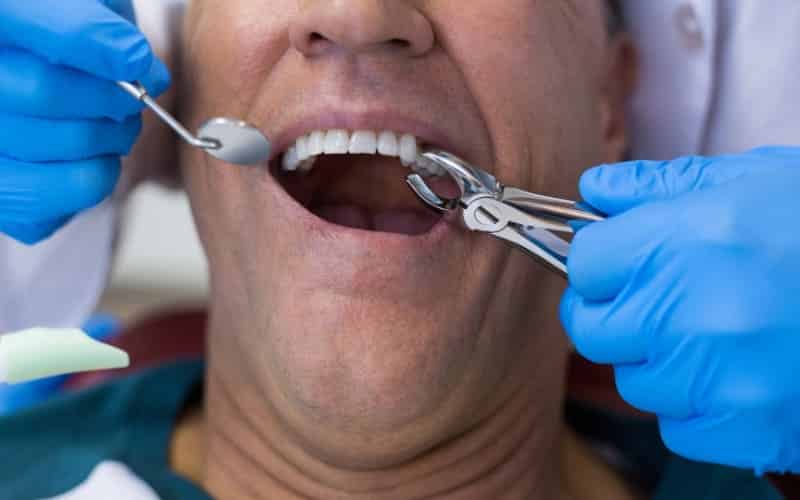A tooth extraction is a dental procedure where a tooth is removed from its socket in the jawbone. After the extraction, bleeding is expected due to the creation of an open wound where the tooth was located. This bleeding is a natural part of the healing process as the body works to form a blood clot at the extraction site, which is crucial for proper healing. While some bleeding is normal, excessive bleeding can be managed by applying gentle pressure with gauze, avoiding certain activities that can disrupt the clot, and following post-extraction care instructions to promote healing and prevent complications. This article will discuss tips for controlling bleeding after a tooth extraction.
Tips for Managing Bleeding After A Tooth Extraction
Here are some tips for managing bleeding after a tooth extraction:
1. Apply Pressure: Bite gently on clean gauze over the extraction site to help form a blood clot and control bleeding. Replace the gauze as needed.
2. Avoid Disruptive Activities: Refrain from vigorously rinsing your mouth, spitting, or using a straw, as these actions can dislodge the blood clot and lead to prolonged bleeding.
3. Use Ice Packs: Applying an ice pack to the outside of your cheek near the extraction site can help reduce swelling and slow bleeding.
4. Follow Post-Extraction Instructions: Your dentist will provide specific guidelines for managing bleeding and promoting healing. Follow these instructions closely to ensure optimal recovery.
Tips to Promote Healing After A Tooth Extraction
To promote healing after a tooth extraction, consider the following tips:
1. Practice Good Oral Hygiene: Brush your teeth gently, avoiding the extraction site, to keep your mouth clean. Rinse with a mild saltwater solution or prescribed mouthwash to prevent infection.
2. Take Pain Relievers as Directed: To manage discomfort, use over-the-counter pain medications recommended by your dentist. Follow the dosage instructions provided.
3. Eat Soft Foods: To avoid irritating the extraction site, stick to a diet of soft, easy-to-chew foods such as yogurt, soup, mashed potatoes, and smoothies.
4. Avoid Smoking and Alcohol: Refrain from smoking and consuming alcohol during the healing period, as they can interfere with the healing process and increase the risk of complications.
Things to Avoid
To ensure proper healing after a tooth extraction, it’s essential to avoid the following:
1. Smoking and Tobacco Products: Smoking can impair blood flow and delay healing. Avoid smoking or using tobacco products for at least 72 hours after the extraction, and ideally longer to support healing.
2. Drinking Through a Straw: Suction from using a straw can dislodge the blood clot that forms in the extraction site, leading to prolonged bleeding and delayed healing. Drink beverages directly from a cup instead.
3. Vigorous Rinsing or Spitting: Avoid rinsing your mouth vigorously or spitting forcefully in the first 24 hours after extraction. This can also disturb the blood clot and lead to bleeding.
4. Hard or Chewy Foods: Avoid hard, crunchy, or chewy foods that can irritate the extraction site or dislodge the blood clot. Stick to soft foods until your dentist gives you the green light to resume a normal diet.
By avoiding these activities and following your dentist’s post-extraction instructions, you can help ensure a smooth and successful healing process.
Wrap Up!
In conclusion, remember that some bleeding after a tooth extraction is normal and typically diminishes within a day or two. However, if you experience excessive bleeding that doesn’t lessen with gentle pressure, or if you notice persistent pain, swelling, or signs of infection like fever, contact Advanced Solutions Family Dental immediately for guidance. Your oral health is our priority! For exceptional care and personalized advice, call us at Advanced Solutions Family Dental today. Let’s ensure your recovery is smooth and worry-free.

